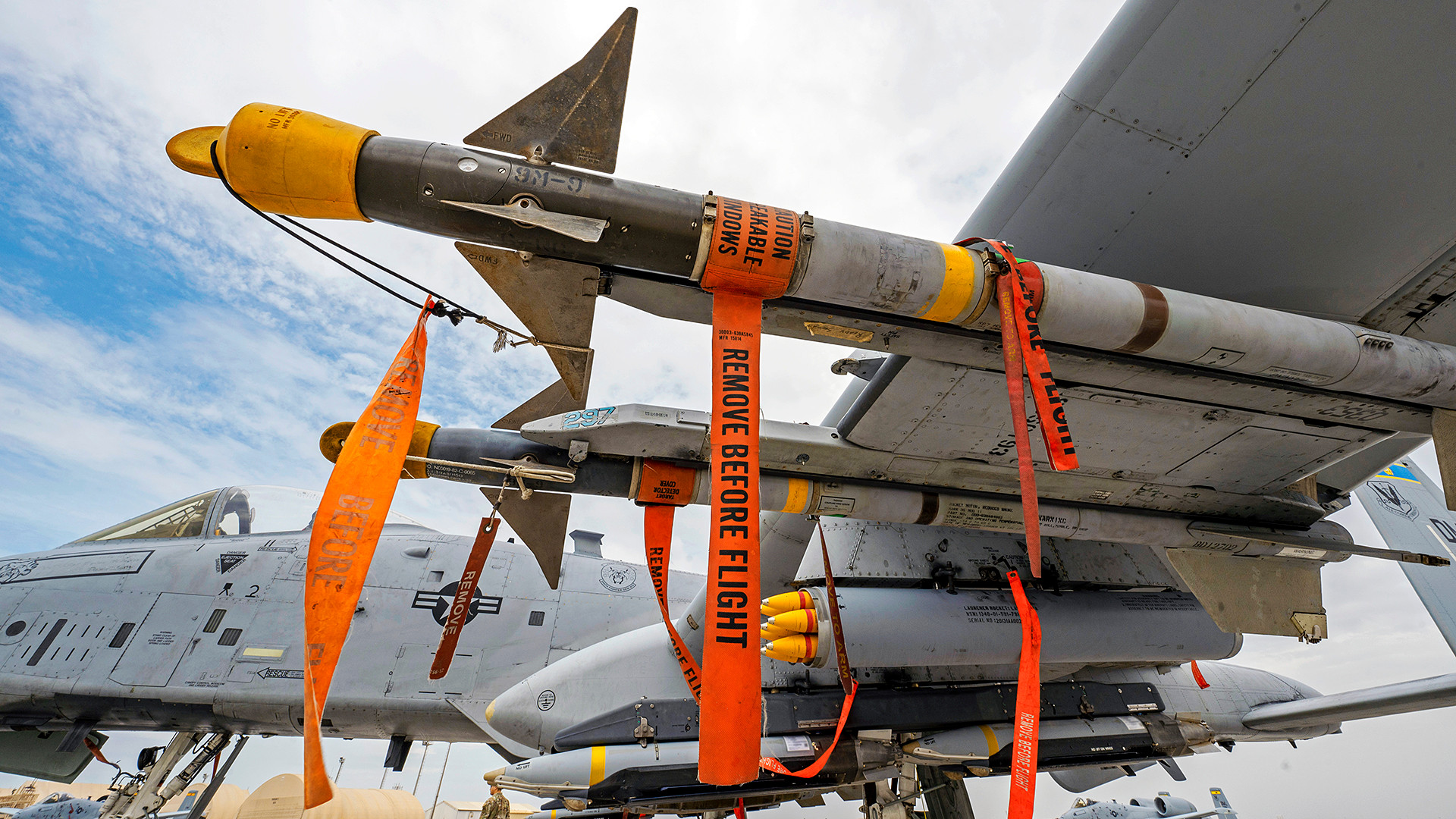Though the U.S. Air Force’s A-10 Warthog ground attack jets look increasingly to be in the twilight of their careers, they are still being sent to places where they could find themselves in harm’s way. Last month, a group of Warthogs touched down in the Middle East as part of a surge in U.S. forces into the region in response to the eruption of the latest Israel-Gaza conflict. Newly released pictures now offer an interesting look at the weapons loadouts on some of these jets as they sit ready to respond to contingencies.
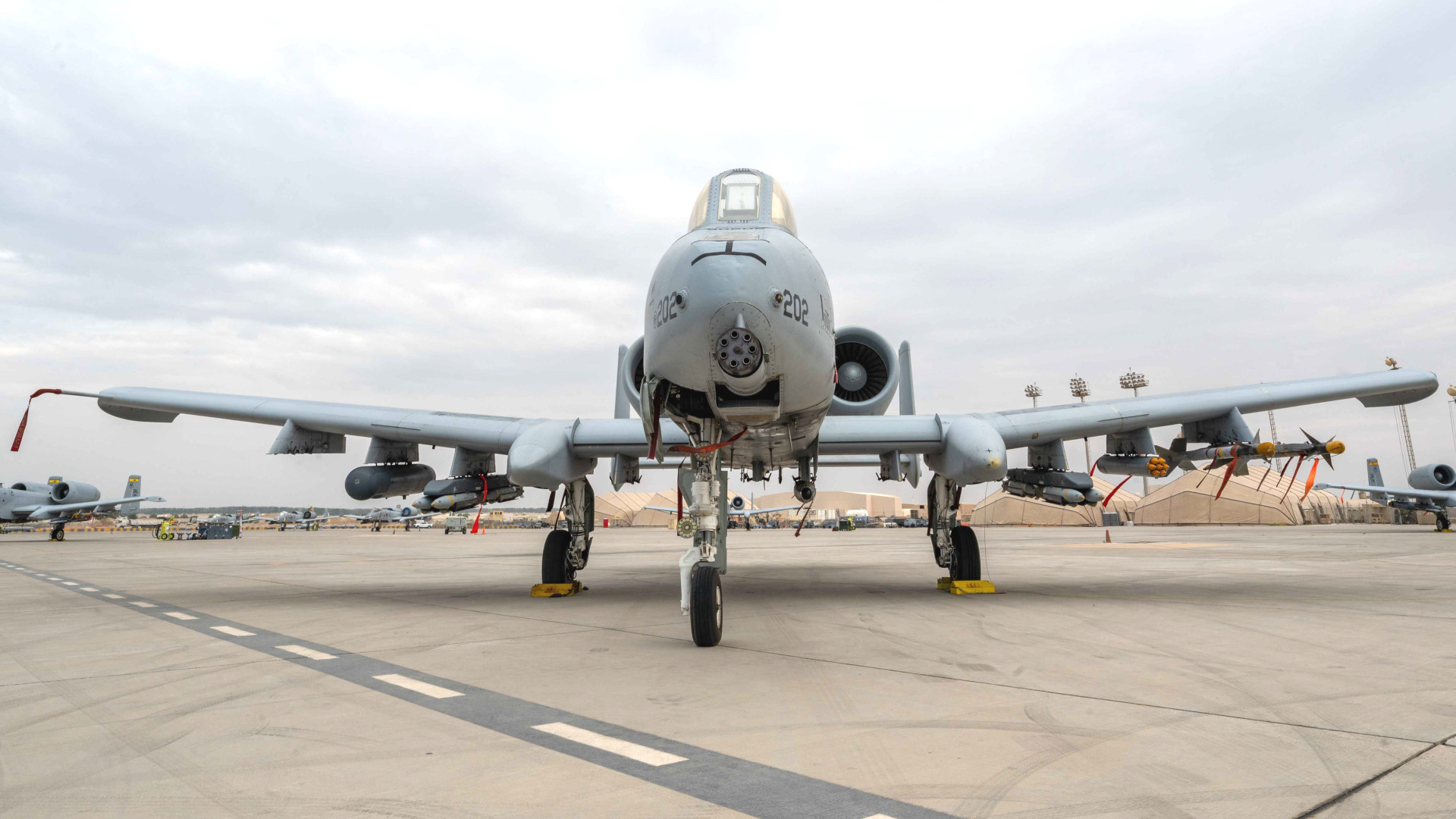
U.S. Air Forces Central (AFCENT), the service’s top command in the Middle East, posted the pictures of the A-10s belonging to the 354th Fighter Squadron loaded with a variety of live ordnance online earlier today. The Pentagon announced the 354th’s Warthogs had arrived at an “undisclosed location” in the Middle East on October 12.

The new images show four A-10s all with the same basic warload.
Each Warthog has a pair of AIM-9M Sidewinder air-to-air missiles on a twin-rail launcher on the outboard pylon under its left wing. This is something these jets routinely carry for self-defense.
Moving inboard, under the left wing, each one also has a seven-round 70mm rocket pod loaded with what looks to be laser-guided Advanced Precision Kill Weapon System II (APKWS II) laser-guided rockets with M282 warheads.
70mm rockets with the APKWS II guidance kit, which goes between the warhead and the motor, are longer than typical unguided types and protrude from the front of standard pods as a result. The M282 warhead has a very distinctive yellow base color with a red band around the front.

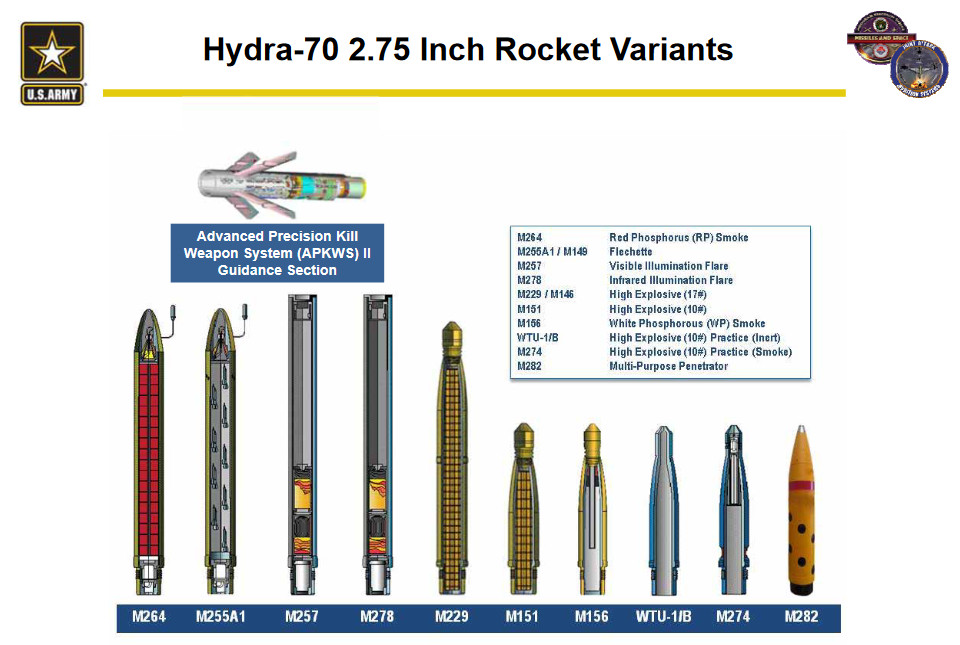
The M282 is a specialized penetrating warhead with the ability to punch through some armor and reinforced structures. As such, these rockets would give each A-10 a valuable precision-strike capability for engaging light vehicles, even some armored ones, as well as hostile forces inside buildings or behind other kinds of hard cover. APKWS II is extremely accurate. It can even be used to take out individuals in doorways and windows if the targeting sensor permits such clear imagery.
On the opposite station under the right wing, the A-10s have LITENING advanced targeting pods, as can be seen in the picture below.
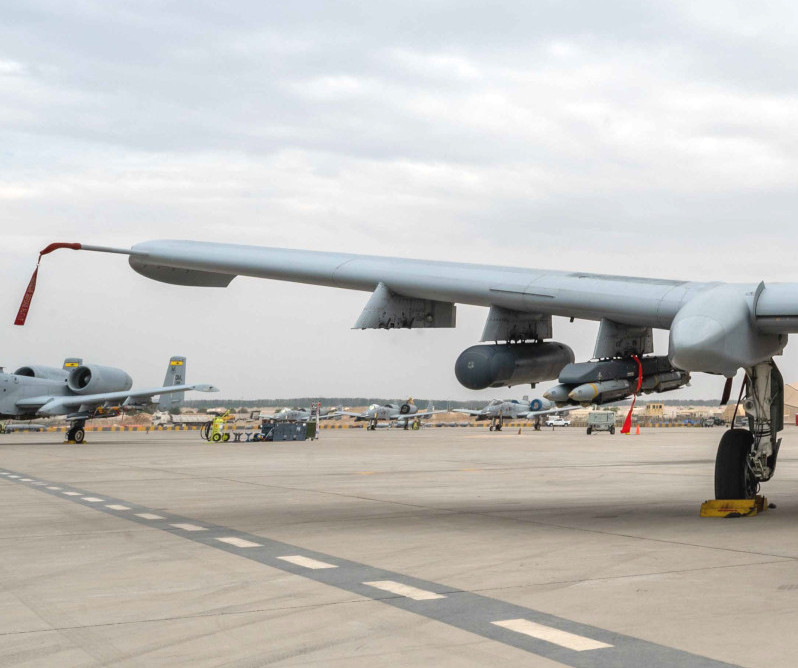
The LITENING pod has electro-optical and infrared full-motion video cameras, as well as a laser designator and laser range finder. It can also determine the specific coordinates of a point on the ground, which can then be programmed into GPS-assisted precision-guided munitions. Altogether, the pod can be used to spot, track, and prosecute targets on the ground, as well as just for general surveillance.

On the inboard stations under both wings of all of the A-10s are special racks holding four GBU-39/B Small Diameter Bombs (SDB). These are 250-pound class small glide bombs with GPS-assisted guidance packages and pop-out wings that can hit stationary targets “in excess of 40 nautical miles” away, depending on release altitude and other factors. SDB gives A-10 crews a standoff attack capability. This can drastically improve their survivability and also increase their flexibility in various engagement circumstances.

Though the SDB has been in U.S. service for many years now, this is a very recent addition to the A-10’s already very diverse arsenal, with the final integration work only wrapping up earlier this year.

The exact SDB variants loaded onto the Warthogs are unclear – the markings near their tails are deliberately blurred out in the pictures – but it is possible that one or more could be GBU-39A/B types. Also known as the Focused Lethality Munition (FLM), this is a version of the SDB specifically designed to help reduce collateral damage. Even standard SDBs offer benefits in this regard over larger precision-guided bombs, while still offering the ability to penetrate inside some types of hardened structures as seen in the video below.

The four armed A-10s from the 354th Fighter Squadron seen in the new pictures all also have a pair of 500-pound class Joint Direct Attack Munitions (JDAM) on stations under their fuselage. JDAMs also come in other weight classes, but they are all modular GPS-assisted precision-guided weapons that are constructed using various kinds of standard dumb bombs as their ‘warheads.’
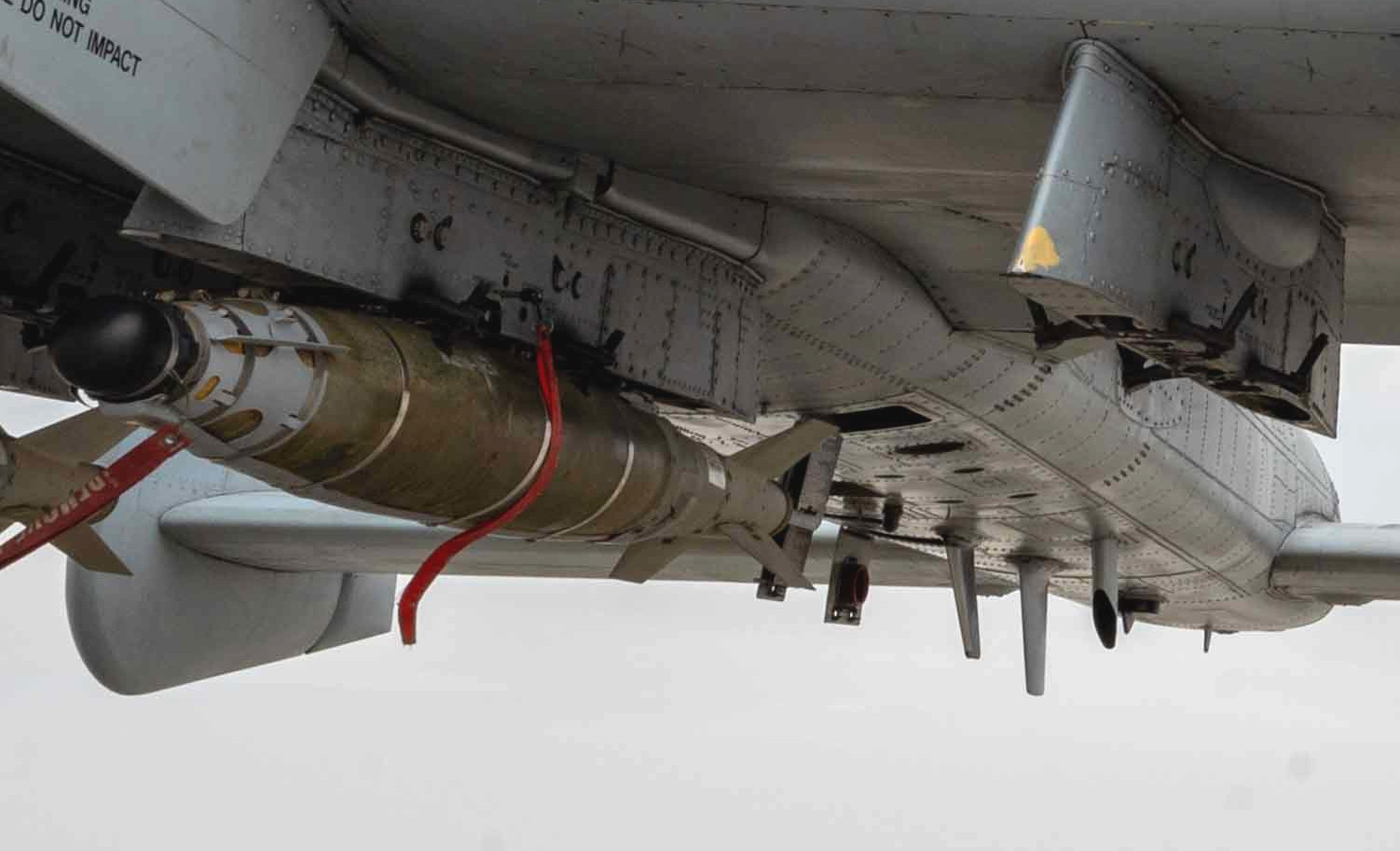
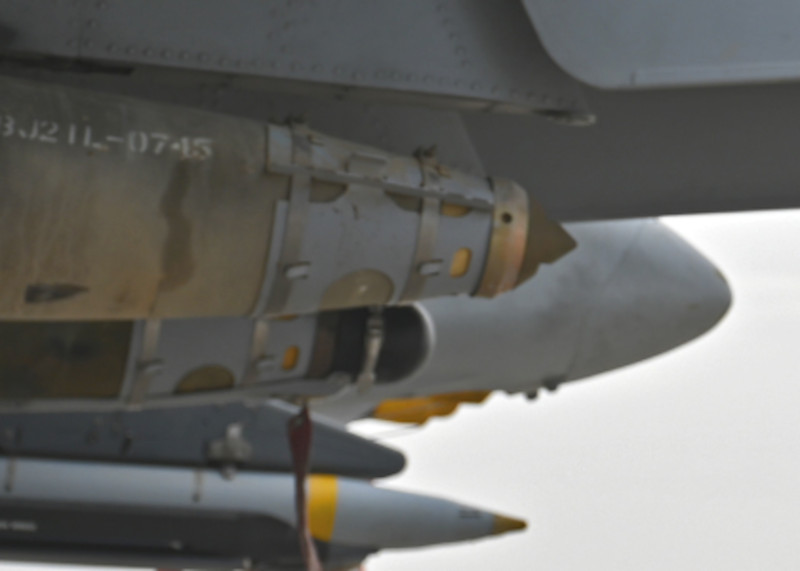
It is not immediately clear what bombs form the cores of the JDAMs on the Warthogs at the undisclosed location in the Middle East. However, each pair includes a Laser JDAM (LJDAM) variant. LJDAMs have a laser seeker on the nose in addition to the standard guidance package in their tail, and therefore have the ability to engage moving targets, as well as stationary ones.

Between the SDBs and the JDAMs, each one of these A-10s has a good mix of additional options for engaging enemy vehicles and other forces, including targets inside buildings or out in the open, with precision.
When it comes to the A-10 it would be remiss to not mention its iconic integral 30mm GAU-8/A Avenger cannon, which can fire up to 4,000 rounds per minute, or almost 70 rounds every second. The magazine for this gun, which can hold up to 1,350 rounds, typically contains a mix of different rounds that offer armor-piercing and high-explosive-incendiary efforts. One known mixture is five armor-piercing rounds to every high-explosive-incendiary one. Another is called the “urban mix” and has a 2:1 blend of high-explosive incendiary rounds and training practice shells (which can still do a lot of damage when they smash into a target).

Not knowing where the 354th Fighter Squadron’s Warthogs are currently located, it is hard to say what potential contingencies they might be best positioned to respond to with these loadouts. It is no secret that Iranian-backed groups in Iraq and Syria have been launching an increasing number of rocket, drone, and other indirect fire attacks on American forces in both of those countries, which have already led to dozens of injuries.
The U.S. Air Force has now carried out two rounds of retaliatory airstrikes against Iranian-linked targets in Syria, the second of which came just today. However, all of those strikes have been carried out by fast-moving combat jets like the F-16C Viper and the F-15E Strike Eagle.
A-10s might be better suited to responding to any attempts by Iranian-backed groups to launch more concerted attacks on American forces in the region. Depending on where they are based, the Warthogs could also be used to help respond to maritime threats in the region, especially swarms of small crewed or uncrewed boats. The jet’s APKWS would be ideal for engaging those threats. Its gun would be useful, as well.
Whatever the case, the deployment of these A-10s comes as it looks more and more likely that the Air Force will finally retire the type for good by the end of the decade, if not sooner. The service has tried on many occasions to get rid of the Warthogs since they first entered service in the 1970s, something that long ago turned into a major saga. Part of that story includes a highly controversial fly-off against the F-35A Joint Strike Fighter between 2018 and 2019. Details about that comparative testing remain murky even after the recent release of a heavily redacted report, as you can read more about here.
Whatever the case, the A-10s from the 354th Fighter Wing, including the ones we’ve now seen with their live ordnance loads, are now among various forward-deployed U.S. military assets in the Middle East that could be called upon if the Israel-Gaza conflict expands into a larger regional conflagration.
Contact the author: joe@thedrive.com
